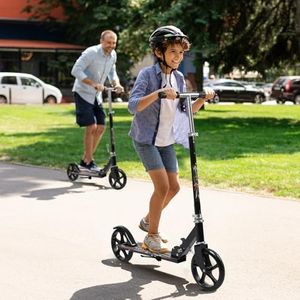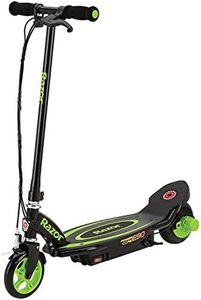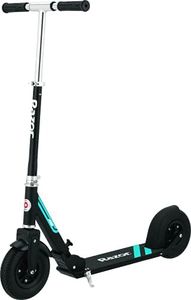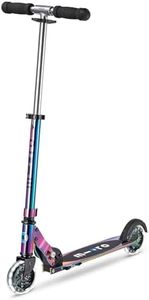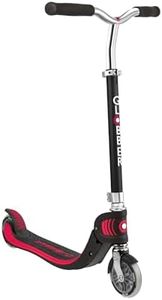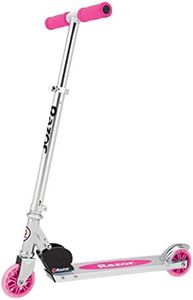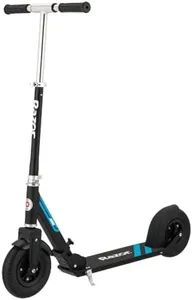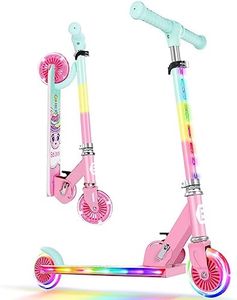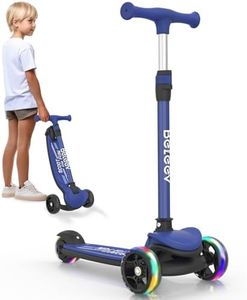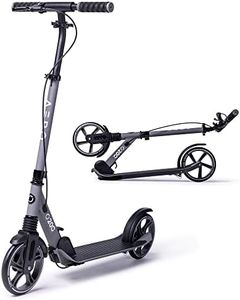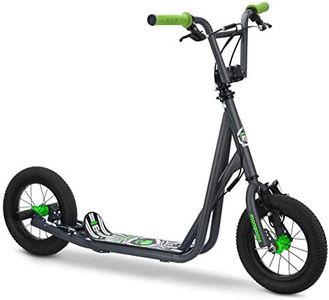We Use CookiesWe use cookies to enhance the security, performance,
functionality and for analytical and promotional activities. By continuing to browse this site you
are agreeing to our privacy policy
10 Best Scooters For Kids
From leading brands and best sellers available on the web.By clicking on a link to a third party's website, log data is shared with that third party.
Buying Guide for the Best Scooters For Kids
Choosing a scooter for kids can be a fun process, but making the right selection is important for safety, comfort, and enjoyment. Start by thinking about the age and experience level of the child, as well as where the scooter will be used most often—sidewalks, parks, or skate parks. The best scooter is one that matches your child’s skill level, is comfortable for their size, and encourages them to have fun while being easy to control.Wheel SizeWheel size refers to the diameter of the scooter's wheels and is important because it affects stability, speed, and how smoothly the scooter rides over bumps. Small wheels (around 100-120mm) are common for younger children and beginners since they keep the scooter low to the ground, making it easier to balance and safer to ride at low speeds. Larger wheels (around 120-200mm and above) make the scooter go faster and handle rougher ground better, but can be harder for smaller kids to control. To pick the right wheel size, think about your child’s age, confidence, and where they'll be riding most—smaller wheels for short, smooth rides, and bigger ones for longer rides or rough paths.
Handlebar HeightHandlebar height is the distance from the ground to the handles and matters because it affects control and comfort. If the handlebars are too low, children may have to bend over, making it harder to steer and less comfortable over time. If they’re too high, it becomes difficult to control the scooter. Most scooters offer adjustable handlebars. The right height is usually at or just below the child’s waist. When choosing, make sure your child tries holding the scooter—it should feel natural and steady.
Number of WheelsScooters for kids commonly come with either two or three wheels. Three-wheel scooters provide more balance and are better suited for younger children who are still learning to balance. Two-wheel scooters are meant for older, more experienced kids who have developed better coordination. If your child is new to scooters, a three-wheel design will help them gain confidence. If they're already comfortable balancing, a two-wheel scooter will offer more speed and maneuverability.
Weight LimitThe weight limit is the maximum weight the scooter can support safely. This is critical for both safety and durability. If a child is close to or above the limit, the scooter could break or be harder to control. Check the recommended weight range for each model, and choose one that leaves room for your child to grow—don’t pick a scooter at the very edge of the weight limit.
Folding MechanismSome scooters can be folded for easy storage and carrying, while others are fixed. A folding mechanism is handy if you’ll need to carry the scooter in a car, bring it inside, or store it in small spaces. If you plan to use the scooter mostly in one place, a non-foldable version is fine and may be slightly sturdier. Choose based on your storage space at home and how often the scooter will be packed away or transported.
Deck Width and GripThe deck is the platform your child stands on. Its width and texture affect comfort and safety. A wider deck provides more stability, which is helpful for beginners, while older or more skilled children might prefer a narrower deck for easier maneuverability. A deck with good grip (often a textured surface) prevents slipping and increases safety, especially if your child rides often or in slightly wet conditions. When deciding, consider your child's shoe size and balance skills.
Brake TypeMost kids’ scooters have a rear fender brake, which is a simple mechanism they step on to slow down. Some may also have hand brakes. The brake type is crucial for safety. Rear brakes are usually sufficient for most kids, as they’re easy to use. If your child will be riding faster or on slopes, a hand brake in addition to the rear brake can give extra stopping power. Think about the riding environment and your child's ability to use the brake confidently.
